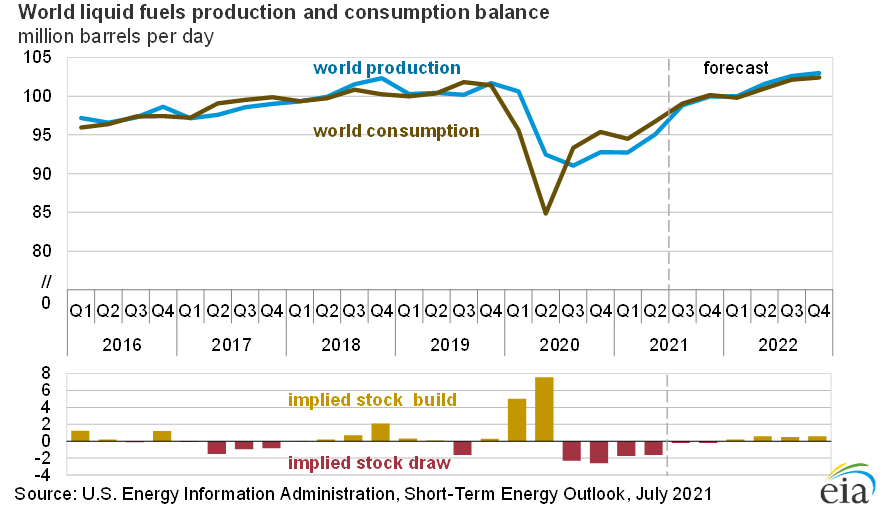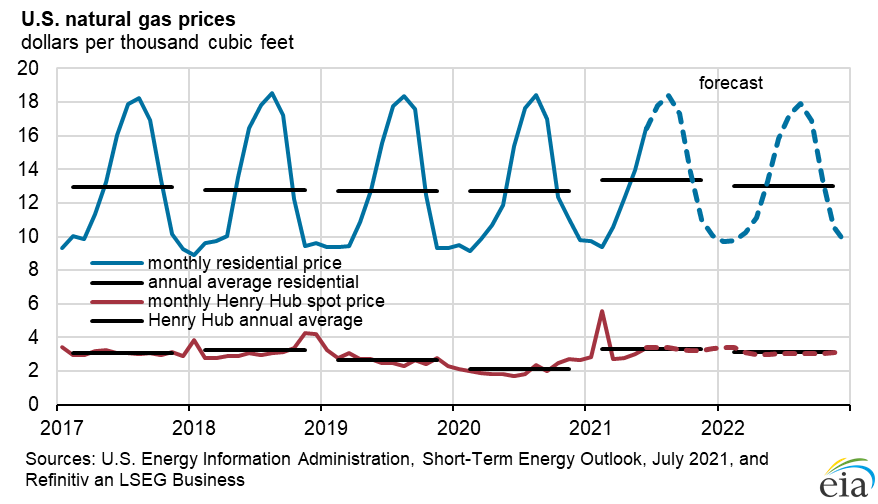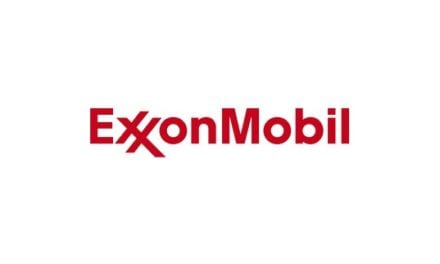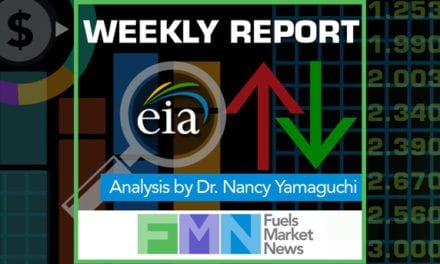Release Date: July 7, 2021
Forecast Highlights
Global liquid fuels
- The July Short-Term Energy Outlook (STEO) remains subject to heightened levels of uncertainty related to the ongoing economic recovery from the COVID-19 pandemic. U.S. economic activity continues to rise after reaching multiyear lows in the second quarter of 2020 (2Q20). The increase in economic activity and easing of the COVID-19 pandemic have contributed to rising energy use. U.S. gross domestic product (GDP) declined by 3.5% in 2020 from 2019 levels. This STEO assumes U.S. GDP will grow by 7.4% in 2021 and by 5.0% in 2022. We based the U.S. macroeconomic assumptions in this outlook on forecasts by IHS Markit.
- Brent crude oil spot prices averaged $73 per barrel (b) in June, up $5/b from May and $33/b higher than in June of last year. In the coming months, we expect that global oil production, largely from OPEC+ members (OPEC and partner nonmember countries), will increase by more than global oil consumption. We expect rising production will reduce the persistent global oil inventory draws that have occurred for much of the past year and keep prices similar to current levels, averaging $72/b during the second half of 2021 (2H21). However, in 2022, we expect that continuing growth in production from OPEC+ and accelerating growth in U.S. tight oil production, along with other supply growth, will outpace growth in global oil consumption and contribute to declining oil prices. Based on these factors, we expect Brent to average $67/b in 2022.
- We estimate that global consumption of petroleum and liquid fuels averaged 92.3 million barrels per day (b/d) for all of 2020, down by 8.6 million b/d from 2019. We expect that global liquid fuels consumption will grow by 5.3 million b/d in 2021. In our forecast, global consumption of liquid fuels rises by an additional 3.7 million b/d in 2022 to 101.4 million b/d, which would surpass 2019 levels.
- Based on our estimates, global liquid fuels inventories rose by 6.3 million b/d in 1H20 before declining at an average rate of 2.1 million b/d in 2H20 and 1H21. We forecast global inventories will continue to fall in the near term but at a slower rate, with global inventories falling by 0.2 million b/d in 2H21. We then expect inventories to rise by almost 0.5 million b/d in 2022.
- U.S. regular gasoline retail prices averaged $2.78 per gallon (gal) in 1H21, compared with an average of $2.20/gal in 1H20. In June, monthly retail gasoline prices averaged $3.06/gal, the first time the monthly average was more than $3.00/gal since October 2014 (in nominal terms). We forecast regular-grade gasoline prices to average $2.92/gal in 2H21 and $2.74/gal for all of 2022.
- U.S. liquid fuels consumption in 2020 averaged 18.1 million b/d, down 2.4 million b/d (12%) from 2019 consumption. We forecast U.S. liquid fuels consumption will rise to 19.6 million b/d in 2021 and then to 20.7 million b/d in 2022, which would surpass the 2019 level.
Natural Gas
- Henry Hub natural gas spot prices averaged $2.03 per million British thermal units (MMBtu) in 2020. We expect Henry Hub prices will rise to an annual average of $3.22/MMBtu in 2021, and we forecast prices will then fall to an average of $3.00/MMBtu in 2022.
- We expect U.S. dry natural gas production to average 92.6 billion cubic feet per day (Bcf/d) in 2021, up by 1.3% from 2020, and then rise to 94.7 Bcf/d in 2022.
- U.S. natural gas consumption averaged 83.3 Bcf/d in 2020, down 2.2% from 2019. We expect that natural gas consumption will decline by 1.1% in 2021 and then grow by 0.7% in 2022. Most of the forecast decline in natural gas consumption this year is the result of less natural gas use in the electric power sector, which we expect to continue to decline because of rising natural gas prices.
- U.S. working natural gas in storage ended the winter withdrawal season in March 2021 at 1.8 trillion cubic feet (Tcf), slightly less than the five-year (2016–20) average. We forecast that flat U.S. natural gas production this summer combined with record U.S. natural gas exports will contribute to slightly lower-than-average inventory builds during the remainder of the summer build season, which ends in October. Forecast natural gas inventories end October 2021 at 3.6 Tcf, which is 3% lower than the five-year average.












